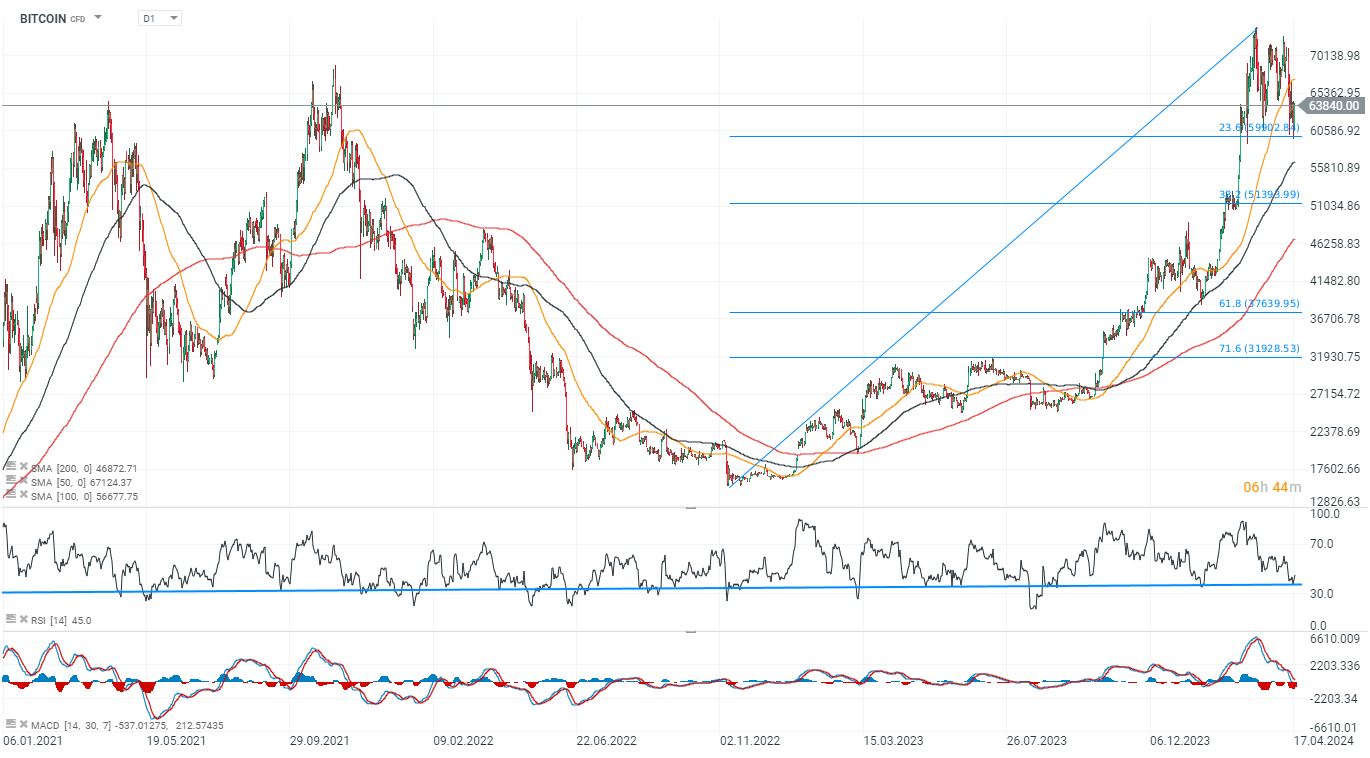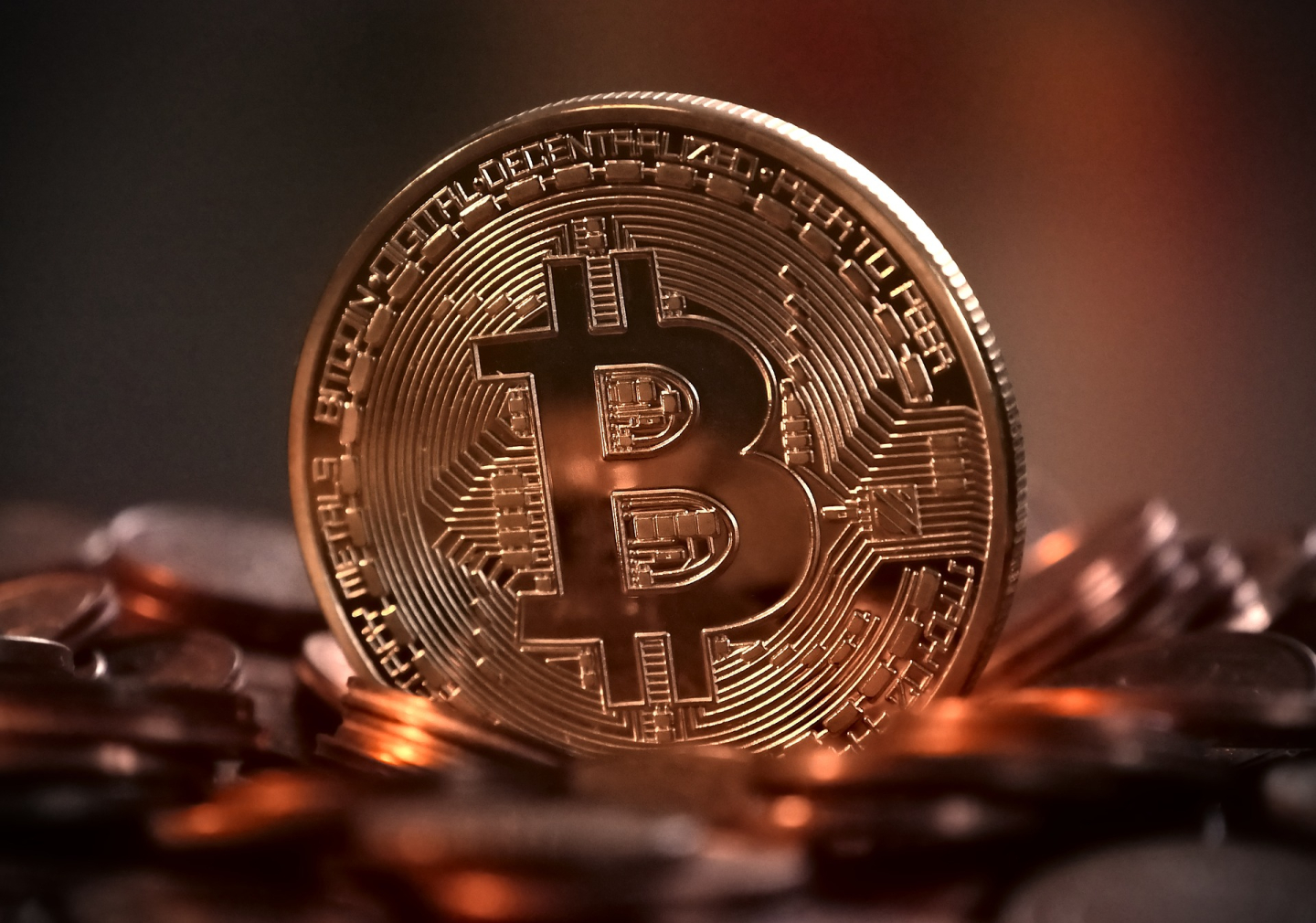This Saturday, probably around 5 AM GMT, the fourth ever halving of Bitcoin will take place. This is an important event for the cryptocurrency market, which investors, traders and short-term speculators from around the world are waiting for. Historically, after each of the previous three halving events, Bitcoin entered a time of dynamic increases, and each time investors asked themselves the same question. Will this time be different? So let's try to ask this question this time as well, and answer it by addressing the key issues arising from the cyclicality, as well as the changes that 2024 has brought to the cryptocurrency market and Bitcoin itself.
Historically, halving preceded Bitcoin's bull markets, which typically began about 12 months before the supply constraint and lasted for about 12 months afterward. The chart shows the price of Bitcoin one year before and one year after each of the previous halves. Remember that past performance does not guarantee future returns, and the market tends to fall into all sorts of cognitive errors. Foremost, more than 90% of Bitcoin's total supply of 21 million BTC is already on the market. Moreover, a total of only 3 halving seems a small sample to estimate the actual short-term impact on the price based on them. Nevertheless, in the long term, the halving limiting impact of BTC supply is quite obvious. Thus, we assume that BTC's short-term reaction is dependent, on general sentiment, and in keeping with the nature of Bitcoin's 'unintuitively' behaving, constantly surprising market, it may be contrary to prevailing sentiment.. Source: XTB Research
If history repeats itself
A well-known saying, by Mark Twain, says that 'history doesn't repeat itself, but it does rhyme'. Likewise (though never the same) have all, to date, cycles of cryptocurrencies. They have been characterized by extreme panics and euphoric rises. So in the first case, let's consider the impact of halving, in the scenario of an optimistic repeat of previous cycles for Bitcoin. In that case, on April 20, we may see a temporary decline (so-called selling the news), followed by a consolidation, a longer period of unwinding and a transition into the second, dynamic and final phase of Bitcoin's bull market.
However, it seems that the 20% correction so far is already quite significant and in its dynamics coincides with the previous similar periods of decline, from 2023 and January 2024. All the previous ones turned out to be 'buying opportunities'. So we might as well see increases immediately after the halving, or for a while before it, although demand so far looks dormant. According to analysis by JP. Morgan, the futures market is still signaling overbought levels, and a volatility-adjusted valuation of BTC, relative to gold, suggests a price near $45,000. Nevertheless, in both scenarios, we can consider the initial short-term reaction as irrelevant to a further (upward) trend, and expect Bitcoin prices to move decisively higher over a halving horizon of several months.
A historically strong support level for Bitcoin prices has been the level of mining profitability, which is currently around $42,000 and illustrates the cost to miners. Another important support comes from the average purchase price of BTC by a short-term investor (so-called realized price around $59,000), which is trading at about a 7% gain under current BTC price, down from nearly 40% premium about 30 days ago. On-chain data, referring to previous cycles, specifically the amount of time BTC acquired by short- and long-term investors recorded a profit or loss, say that we may see about 5 to 12 months of bull market ahead. This would imply a peak in cyclical Bitcoin growth around Q4 2024 or Q1 2025.
The broader picture of limited supply (which only translates into higher prices in a still-high-demand scenario) is compounded by no longer halving alone, as has been the case in previous cycles. Bitcoin has become a recognizable asset, and the available supply will be influenced more than halving itself by the activity of U.S. exchange-traded funds (ETFs), which, after 4 months of operation, already hold more than 5% of Bitcoin's total supply. Investors should therefore keep a close eye on sentiment on the Nasdaq100, bond yields and the dollar itself; the combination of these three factors could determine short-term price movement through certain behavior of ETF holders. A continued bull market in stock markets would likely favor bitcoin.
If history (doesn't) repeat itself
As is well known, Bitcoin is a deflationary asset, meaning that its supply is limited. The halving programmed into Bitcoin's code itself affects the cryptocurrency's inflation rate and cuts the mining reward in half (it will now drop from 6.25 to 3.125 per BTC block). Historically, it has created the prospect of increased demand, due to the expected bull market. As a result, investors have been reluctant to get rid of Bitcoin, expecting the value of their investments to rise in the medium term. But what if it really is 'this time will be different' and the current cycle will be completely disrupted? While just a few months ago such a prospect seemed less likely, we now see at least one factor that could determine this. Why current halving cycle may be shorter? The SEC acceptance of US ETFs had the 'halving effect', almost 4 months before the halving.
We are talking about US ETFs, which have 'swallowed' a massive amount of BTC in recent months. Only the two largest of a total of 10 of them, i.e. BlackRock Bitcoin Trust and Grayscale Bitcoin Trust, hold Bitcoins worth a combined total of almost 36 billion USD. Additionally, regulators in Hong Kong have approved the establishment of similar spot ETFs. Overall demand is now broader and has been enriched by investors, whose reactions may correlate more strongly with Wall Street. More so than was the case when Bitcoin was an alternative but very little-known asset. Bitcoin sentiment may be more closely related to what is happening in the stock markets.
A number of individual and institutional investors investing in exchange-traded ETFs will be adjusting portfolios according to, and assessing, the risk of their individual components. Bitcoin is still seen as a risky investment, and the Federal Reserve's restrictive policies and recent surprising inflation data supporting the dollar have caused capital to at least temporarily 'turn its back' on risky assets. Moreover, tensions between Israel and Iran in the Middle East have not helped the cryptocurrency at all, even leading to an increase in discounts, despite optimistic voices recently suggesting that bitcoin could provide a hedge for a period of military tensions.
Nevertheless, while ETFs have seen recent outflows, and interest in them has waned, this is consistent with the cyclical nature of the market, and the lack of stronger selling suggests that many holders are adopting a long-term investment horizon, effectively limiting the supply of BTC. On the other hand, a potential sell-off in BTC collected by them could cause panic, potentially changing the cycle. The entire cryptocurrency market, as well as hedge funds pursuing a trend-tracking strategy, are watching ETF inflows as a major indicator of market strength. Rising oil prices, a tougher fight against inflation and economic data justifying the restrictive (and consequently potentially dangerous for stocks) policies of central banks ('higher for longer') seem to pose some risk to a halving cycle. On the other hand, however, the massive size of the U.S. economy's debt burden and resulting fiscal problems, and the potential continuation of the U.S. dollar's downward trend against assets (not necessarily currencies), continue to be tailwinds for speculative Bitcoin.
Bitcoin (D1 interval)
The price of Bitcoin has caught a breathlessness after a huge rally, but today gains almost 4%. The support level near $60,000 has so far held and is supported by two important levels. Both the 23.6 Fibonacci retracement of the upward wave from December 2022 and the 71.6 Fibo retracement of the downward wave from November 2021. In each of the previous bull markets, an important support level proved to be the average purchase price of BTC by a short-term investor (holding BTC for less than 155 days), which is currently around $59,000 and for US ETFs settles around $55,000. A dip below either of these two levels could lead to an accelerated sell-off. In the scenario of deeper declines and panic, the key levels are around $51,000 supported by past price reactions and the 38.2 Fibo, as well as the mentioned level of Bitcoin miner's profitability 'break-even' around $42,000.
 Source: xStation5
Source: xStation5
Bitcoin ร่วงแตะ $91K แม้มีเงินไหลเข้ากองทุน ETF หนาแน่น 📉
ข่าวคริปโต: บิทคอยน์กลับมาปรับตัวขึ้นในปี 2026 📈
ข่าวเด่นวันนี้
📊 การวิเคราะห์ทางเทคนิค: Bitcoin


